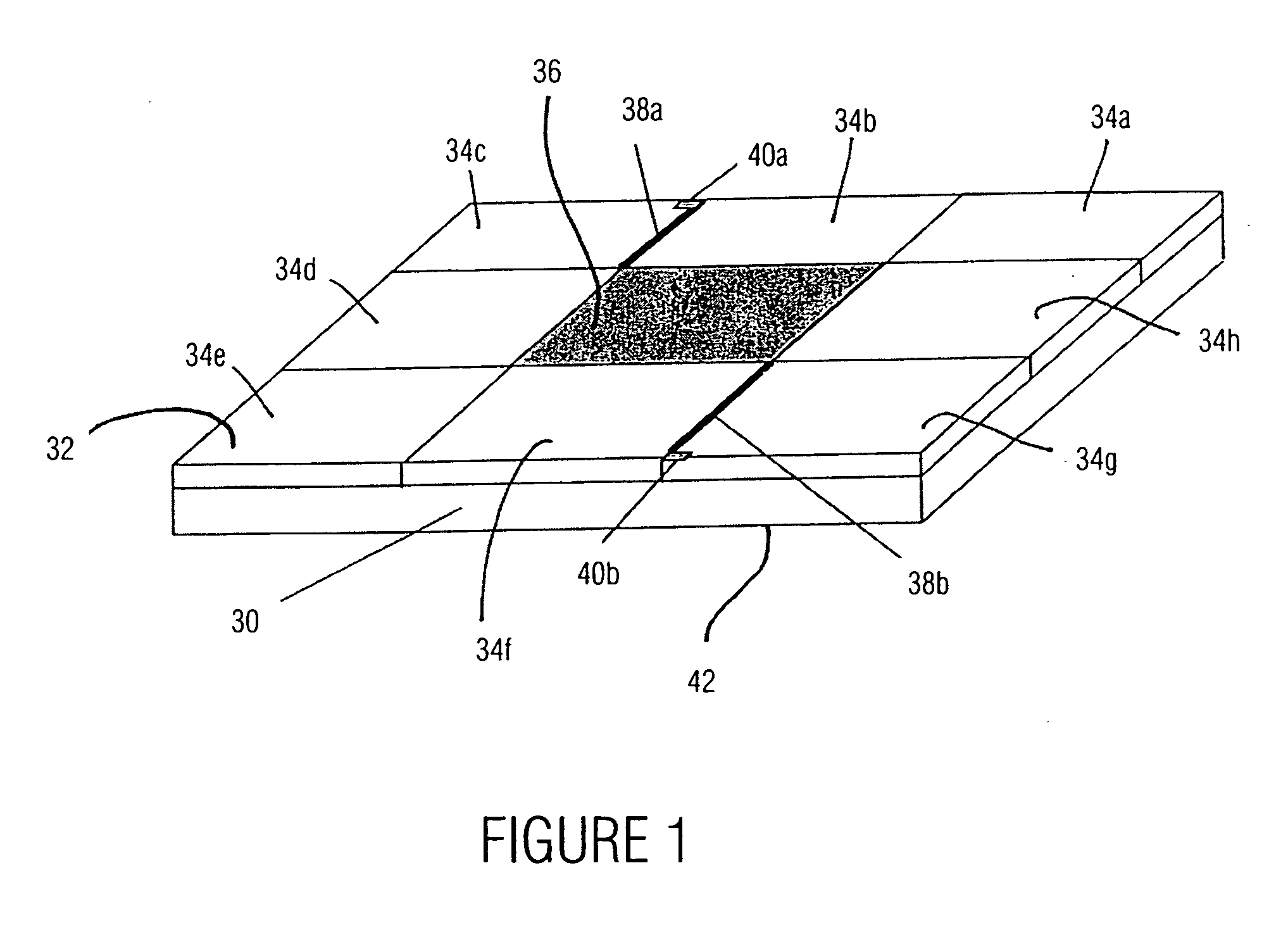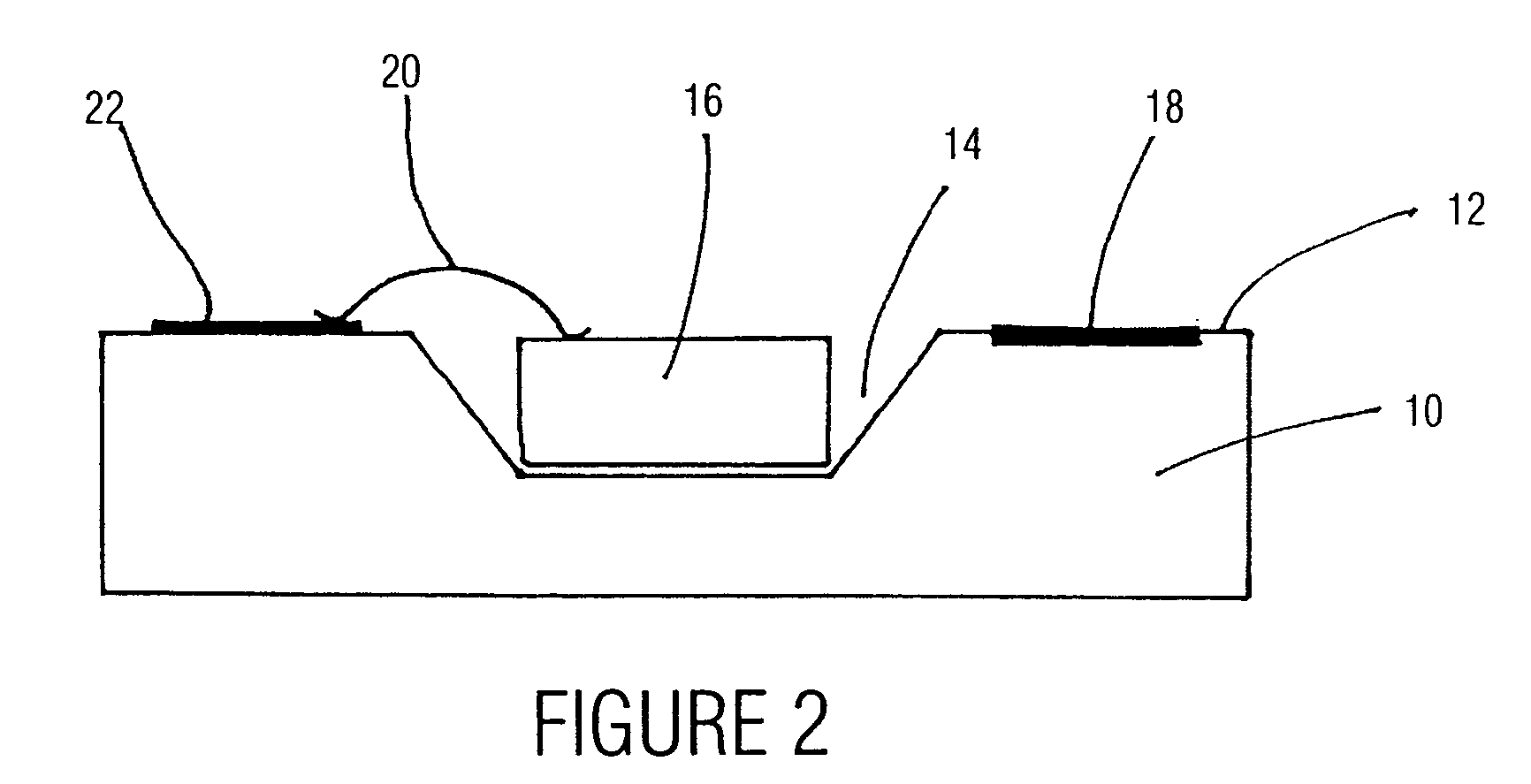Opto-electronic device having a light-emitting diode and a light sensor
a technology of light-emitting diodes and opto-electronic devices, which is applied in the direction of radiation controlled devices, optical radiation measurement, instruments, etc., can solve the problems of limited miniaturization, high manufacturing cost, and inability to meet the requirements of large-scale production, and achieves easy large-scale production, low manufacturing cost, and simplified manufacturing
- Summary
- Abstract
- Description
- Claims
- Application Information
AI Technical Summary
Benefits of technology
Problems solved by technology
Method used
Image
Examples
Embodiment Construction
[0036]FIG. 1 is a schematic illustration of a perspective view of an opto-electronic device according to a preferred embodiment of the present invention. An Si substrate 30 comprises eight light sensors 34a, . . . , 34h and a light-emitting diode 36 on one surface 32. The light sensors 34a, . . . , 34h and the light-emitting diode 36 respectively comprise a substantially rectangular or square shape. The light sensors 34a, . . . , 34h and the light-emitting diode 36 are arranged in a grid-like shape of three rows lying next to each other respectively having three devices, wherein the light-emitting diode 36 is in the middle and is surrounded by the light sensors 34a, . . . , 34h on all sides. The light sensors 34a, . . . , 34h are preferably semiconductor light sensors, for example photodiodes, phototransistors, photoresistive devices or other photosensitive devices having an electrical characteristic which is changed by incoming light in a known way.
[0037] The light-emitting diode ...
PUM
 Login to view more
Login to view more Abstract
Description
Claims
Application Information
 Login to view more
Login to view more - R&D Engineer
- R&D Manager
- IP Professional
- Industry Leading Data Capabilities
- Powerful AI technology
- Patent DNA Extraction
Browse by: Latest US Patents, China's latest patents, Technical Efficacy Thesaurus, Application Domain, Technology Topic.
© 2024 PatSnap. All rights reserved.Legal|Privacy policy|Modern Slavery Act Transparency Statement|Sitemap



